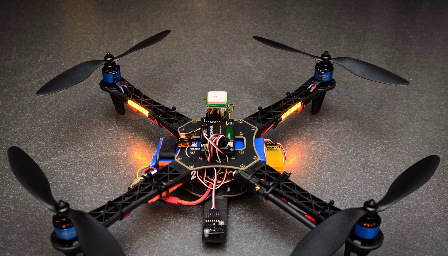
Drone Development Training
Drone (Development / Training)
- Hardware: The hardware components of drones have improved significantly. Lightweight materials, such as carbon fiber and composite plastics, are commonly used to construct the frame, reducing weight while maintaining strength. Powerful and efficient motors, along with high-capacity batteries, provide the necessary thrust and flight endurance. Advanced sensors, including GPS, accelerometers, gyroscopes, and altimeters, enable stable flight, precise navigation, and autonomous features.
- Software: Drone software has become more advanced, allowing for autonomous flight capabilities and enhanced control systems. Flight control algorithms, such as PID (Proportional-Integral-Derivative) controllers, help stabilize the drone and maintain desired flight paths. Additionally, flight planning and mission management software enable autonomous operations, waypoint navigation, and automated data collection.
- Remote Control Systems: Drone control systems have evolved to provide intuitive and user-friendly interfaces. Pilots can control drones using handheld transmitters or even mobile devices through dedicated apps. Advanced remote control systems offer features like live video streaming, telemetry data display, and autonomous flight modes.
- Computer Vision and Object Avoidance: Computer vision technology plays a crucial role in drone development. Cameras and sensors mounted on drones allow for real-time image and video capture, as well as object detection and tracking. This enables applications such as aerial photography, surveying, mapping, and inspection. Object avoidance systems, using technologies like LiDAR (Light Detection and Ranging) or depth sensors, help drones navigate safely and avoid collisions.
- Connectivity: Drones can be connected to the internet or other networks, enabling remote control, data transmission, and cloud-based operations. This connectivity facilitates real-time video streaming, remote monitoring, and the exchange of telemetry data. It also enables coordination and communication between multiple drones or with ground control stations.
- Artificial Intelligence and Machine Learning: AI and machine learning techniques are increasingly being integrated into drone development. These technologies enable drones to analyze data, make autonomous decisions, and perform complex tasks. Machine learning algorithms can be used to recognize objects, detect anomalies, optimize flight paths, and improve performance over time.
- Swarming and Collaboration: Drone swarming involves the coordinated flight of multiple drones working together as a cohesive unit. This technology enables collaborative tasks, such as search and rescue operations, surveillance, and swarm-based data collection. Swarming algorithms and communication protocols allow drones to share information, synchronize movements, and achieve common objectives
DRONE TECHNOLOGY
@KARAIKUDI



